March 2014 found Students of Carr Junior School, York, helping the museum celebrate a world record – when the Lancashire & Yorkshire Railway School of Signalling display was officially named as the world’s oldest working model railway.
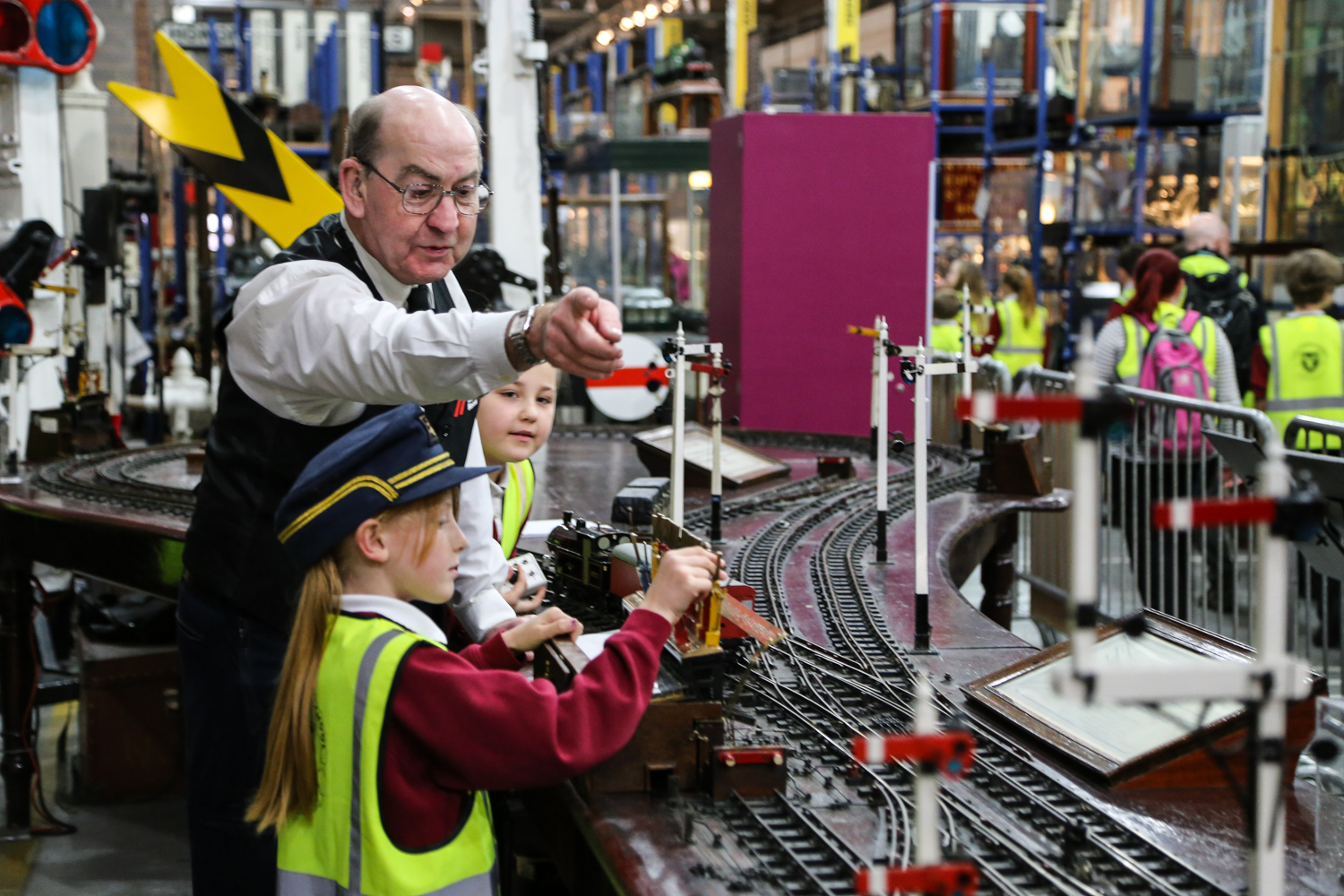
Built in 1912, the model was used until 1995 to train railway workers in the rules and regulations of railway signalling. Since 2003 it has been restored to working order by a team of dedicated volunteers and today it’s still doing what it was designed to do, teach people how to signal trains.
The story began in 1910, when the Lancashire & Yorkshire Railway established a ‘School of Signalling’ on the upper floor of its headquarters in Manchester Victoria Station. The school enrolled 100 students who, as now, attended in their own time to learn absolute block signalling.
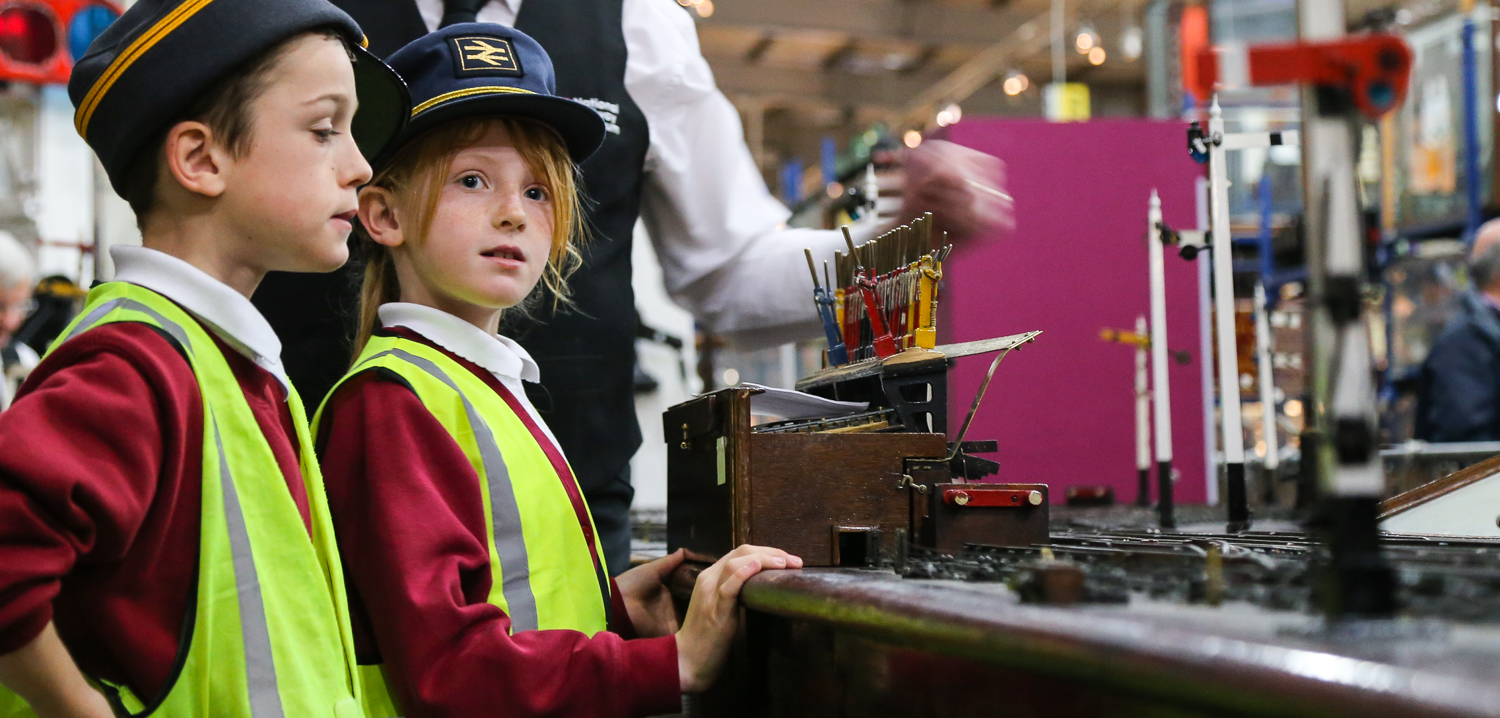
The experiment was successful enough for a working model railway to be commissioned and installed in the classroom. The model was built as a training exercise by apprentices of the company’s Horwich works and supplied with rolling stock by Basset Lowke Ltd. It was installed in 1912; and in use by1913.
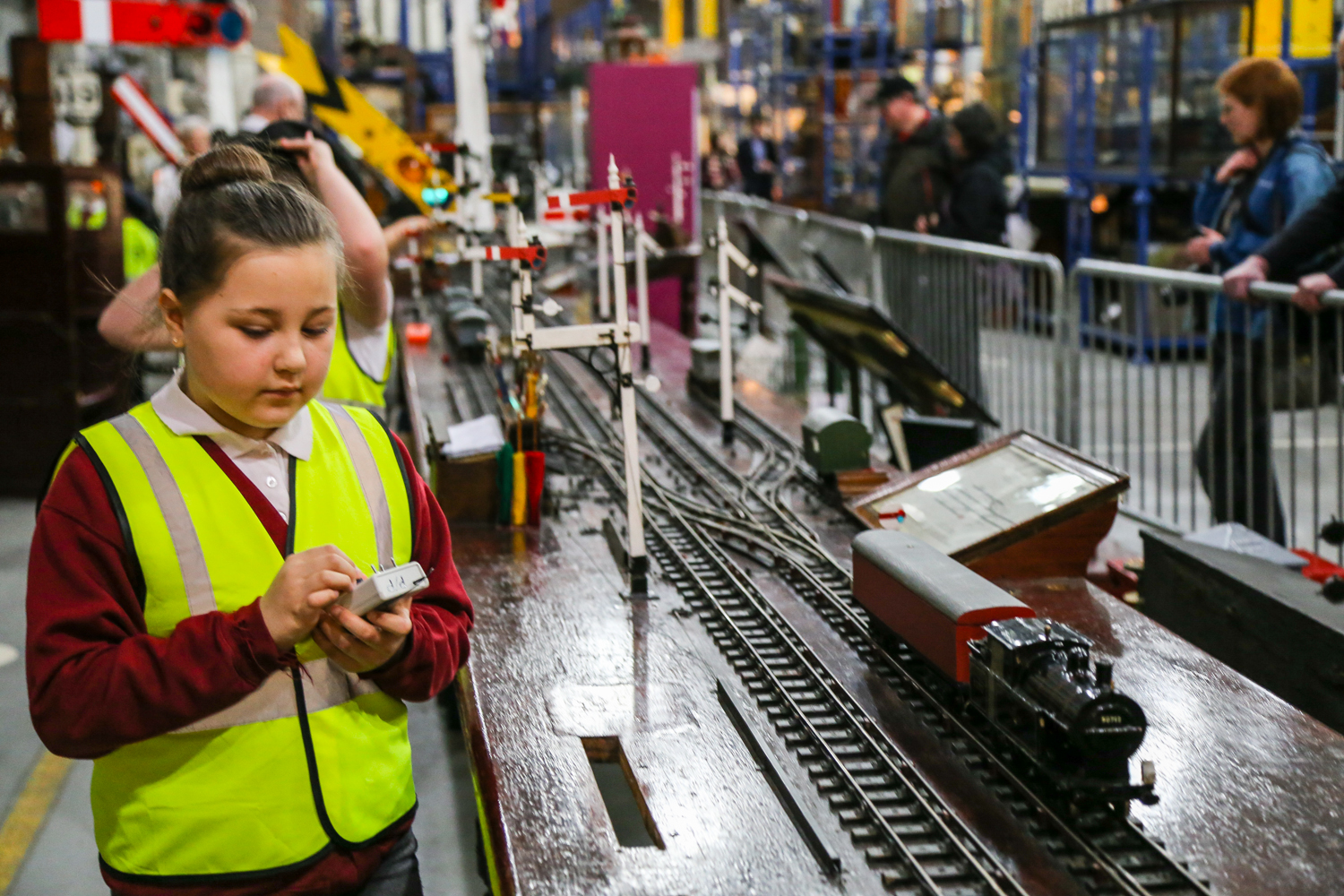
The newly installed model had working block instruments, interlocked mechanical lever frames and electrically powered trains. It replicated in miniature every situation railway signallers were likely to encounter. In the following 82 years of service, it changed to reflect the railway its students worked on. Overhead wires (catenaries) were added, colour light signals appeared and a train control desk was built. However, despite these changes, it remained a vital training tool for signallers.
In 1995, Rail Track called time on the Edwardian masterpiece and its long working life came to a finish. The layout was donated to us and over four days in September 1995, it was packed into boxes and transported to our museum.
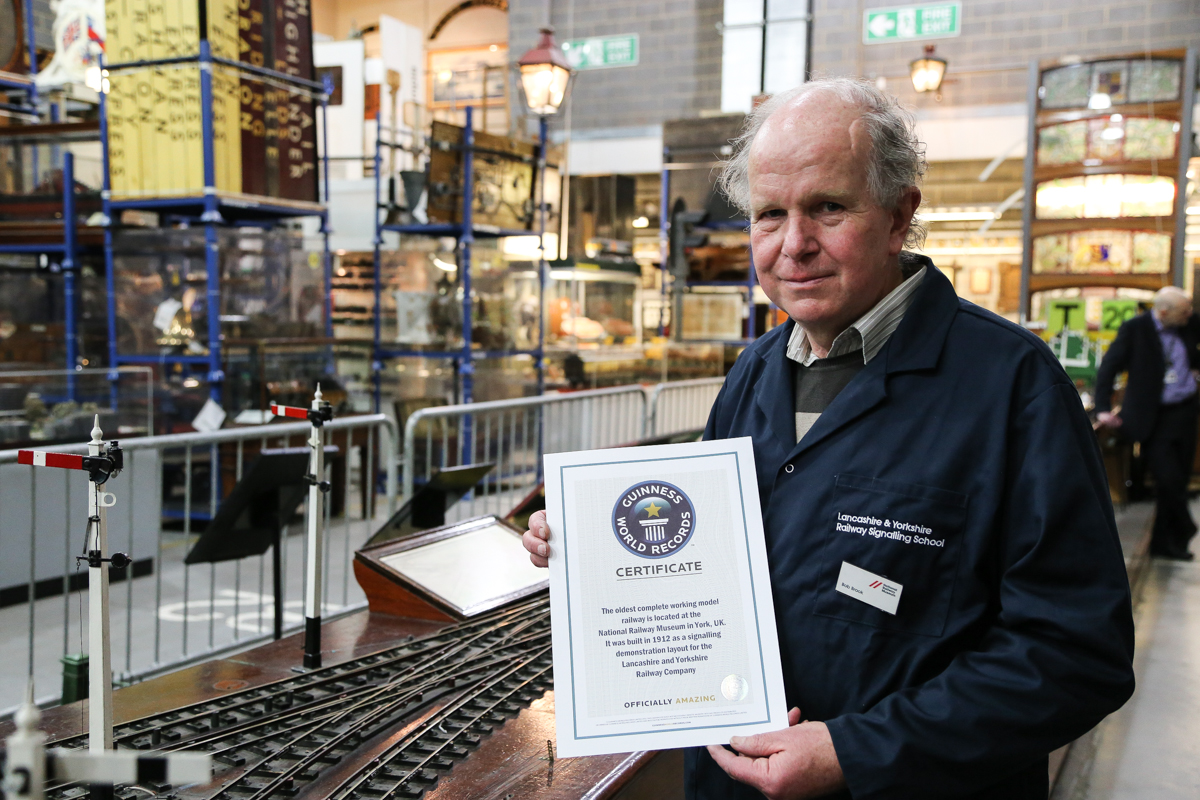
In 1999, Bob Brook and some fellow volunteers began the process of unpacking the boxes and restoring the model to its former glory. This was a painstaking process, but slowly the team pieced the puzzle back together and made the trains roll again. By 2003, the layout was working again.
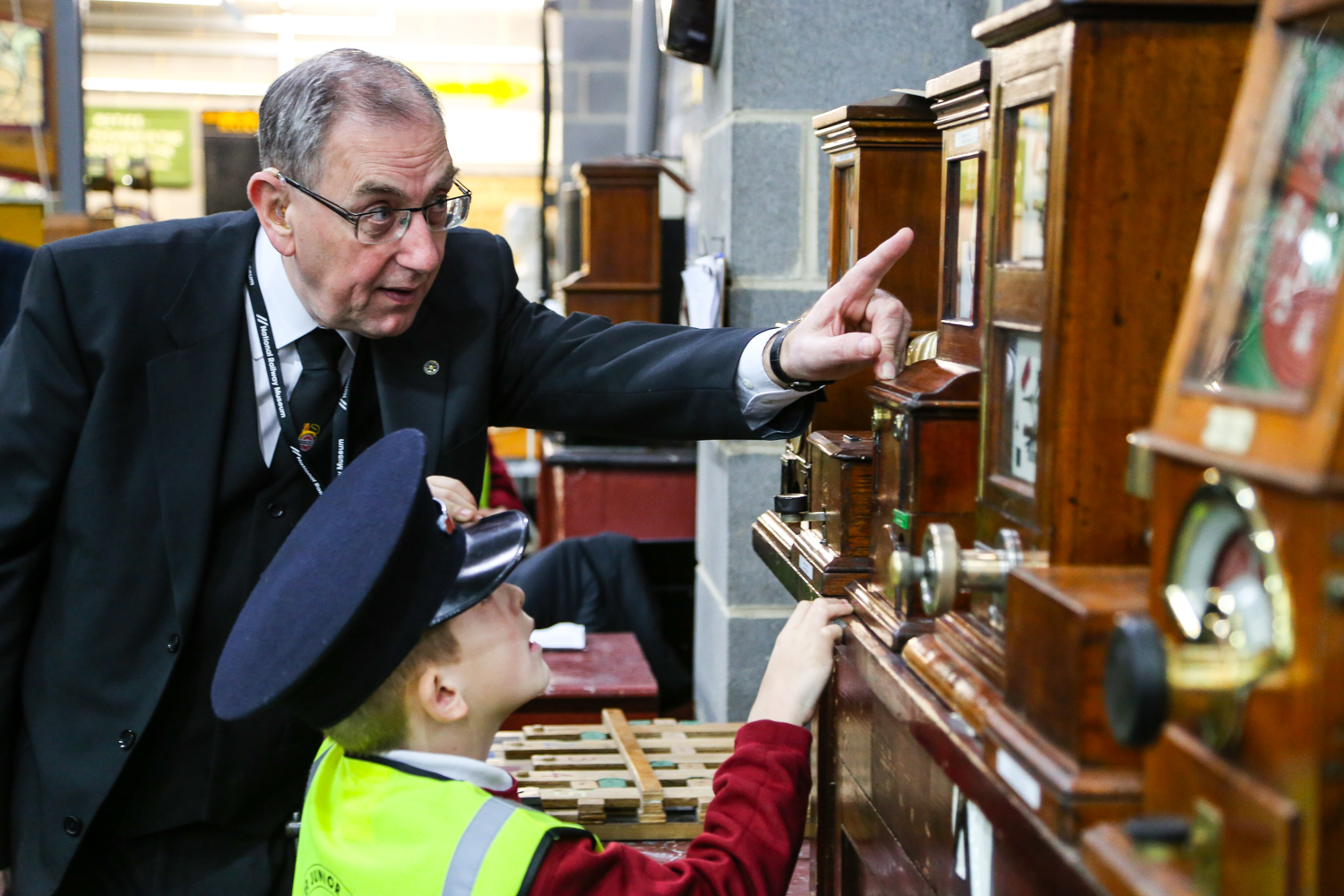
Today the model is demonstrated to museum visitors, used by Network Rail and offers hands on signalling experience to school students learning about railway safety. It is a living object that links the museum with 100 years of railway tradition and is now a world record holder!
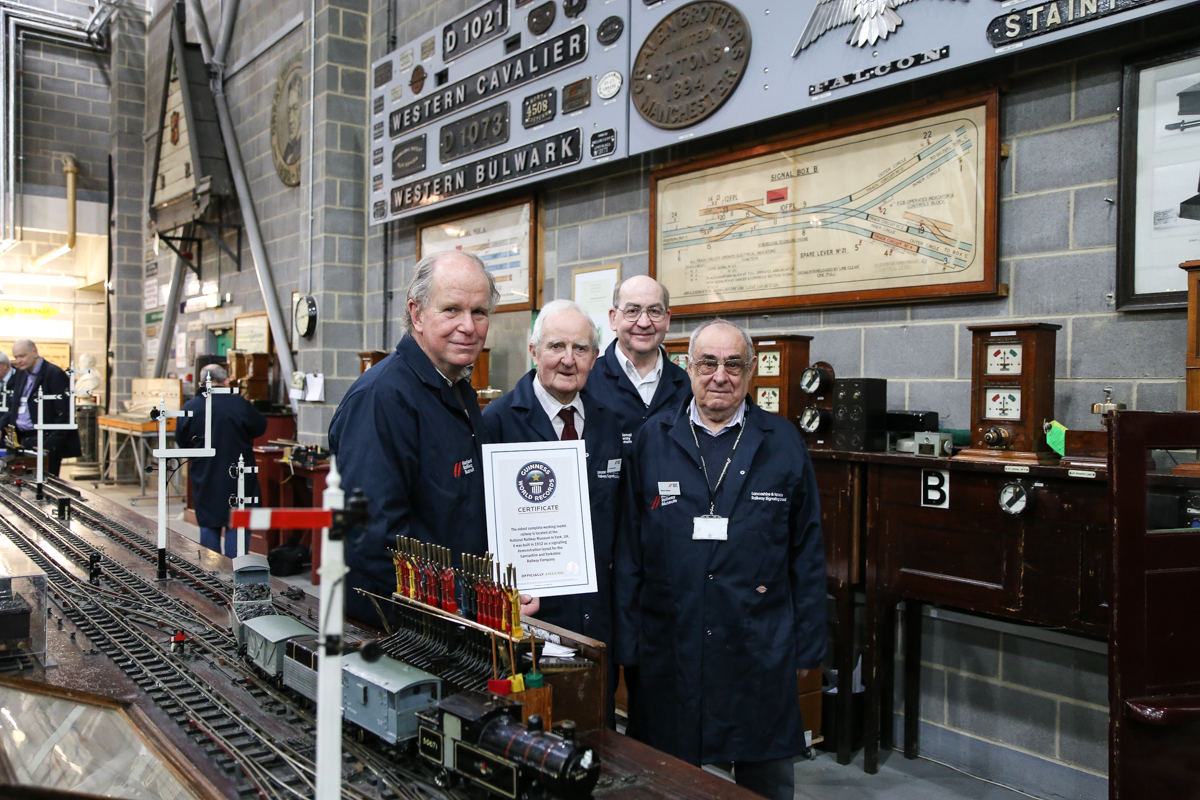
In celebrating the record, it’s important to remember the pioneers, who laid the foundations of success. Therefore, it is a big thanks to Dave Eastoe, Bob Brook, Len Green Horn and Peter Munthe-Webster for laying the foundations that made this record-breaking achievement possible.
[youtube=https://www.youtube.com/watch?v=1MTaPwuDAqg]
See the layout in action with a regular programme of live demonstrations. Find out more.
Reblogged this on Calling All Stations and commented:
By the NRM…
My dad was a signalman at Stalybridge station ( no 4 box). Between the second world war and 1966. I used to go to see him during the late 1950’s when he was on a 2 to 10 pm ‘late turn’ shift on a Sunday.
The sounds , sights and smells of that signal box remain with me to this day ( I’m 75 years). The lighting in the box was a kind of yellowish green and in winter, when the days were short it was a strange ethereal , yet cosy atmosphere for a young lad. The sound of the bells made a haunting noise in the gloom , coupled with the ‘clack’ of the levers that dad was pulling,
I remember thinking dad must have preferred working .’nights’ when it would have been quieter. It was only later that I found out that nights’ were the busiest times, due to the amount of freight trains passing through, many of which were ‘coal trains’ bound for a local power station, some of these trains were extremely long between 60 to 80 wagons! Freight trains could be so numerous that that were backed up for miles awaiting their turn to enter his section.
The other memories i have are the stove with a huge kettle and frying pan . The train record book with his extremely neat handwriting and the occasional plate layers ‘bobbing in’ for a brew and a warm.
Being a signalman on nights must have been a lonely experience , and the levels of concentration needed would be crucial!
Happy days though and fond memories
Reblogged this on sed30's Blog and commented:
Wanna a go!
Undoubtedly the L&Y layout deserves the acolade as the oldest, but there were others, and still are. When the Southern Region Eastern Divisional Training School was re-located to Beckenham Junction in the late 1960s an ‘O’ gauge layout, fully signalled was installed to train operating staff including signalmen. London Underground too have their own layout, which so far as I know is still in used for its original purpose.
I trained at Manchester Victoria school of signalling in 1970. I was 18 at the time. I loved it and became a Signallman on British Rail at Radway Green in Cheshire on the Crewe to Stoke line. The school was amazing and I made many friends but lost touch. My name is Mike Nixon.